Contents:
1 Youth and Identity in Recent Short Fiction
2 Teaching a Multi-Media Project: “Freedom Writers”
3 A German Case Study
4 Additional Web Sites
1 Youth and Identity in Recent Short Fiction
The process of growing up means growing into society as well as growing into one’s own skin; it means doing things differently than one’s parents, and thus “renewing” and redefining society. It is not a coincidence that modern youth culture has its foundation in the U.S. The U.S. is
- a “young” country in historical terms,
- an immigrant culture–which tends to be a young culture,
- an innovative society in terms of technical progress and consumer culture.
Youth culture is often associated with dress, specific music styles such as Hip-Hop today or Rock ’n’ Roll in the past, as well as technical gadgets. While contemporary youth culture as described above is flashy, tends to get students instantly interested and is attractive in its own right, there are teachers who feel uncomfortable about using materials with which they are not familiar. For example, young people rely heavily on social networking, but certain technologies or sites are already “out” before one realizes it. Second Life, which only a few years ago found many followers, has lost its appeal just as MySpace, although Facebook still seems to be popular. While some teachers share their students’ musical taste, most do not since they belong to a distinctly different generation. And although Hip-Hop as well as Rock ’n’ Roll span generations, many teachers would find it difficult to use current rap music in the classroom. Yet, an open classroom allows students to contribute to materials, and a good teacher does not need to be in control the whole time.
Today’s EFL classroom incorporates many media, has easy access to YouTube videos, the use of Twitter or other Internet-based communication tools. For a reflective and deeper understanding of how society has changed over the decades, though feelings of teenagers have not, literature, especially the short story, still enriches classroom discussions and offers young readers a chance to identify with literary figures going through “growing pains.”
Two anthologies offer a wealth of material for a literary analysis of the struggles young people face in relating to their peers, in trying to be different than the parent generation and at the same time to find their place in society. These stories are about relationships with individuals, with society, the nation, the dominant culture(s). They fit into curriculum topics such as Berlin-Brandenburg’s EFL classroom objectives “Society and the individual,” “Personal relations in their social context,” “Public and private morality,” “Overcoming prejudices in society,” “Nations between traditions and change,” “National and cultural identity,” “Challenges of the present,” and “Current political and social issues.”
http://www.berlin.de/sen/bildung/schulorganisation/lehrplaene/index.html
1.1 Ethnicity and Youth Culture(s)
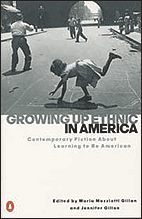 Growing up Ethnic in America. Contemporary Fiction about Learning to be American, eds. Maria Mazziotti Gillan and Jennifer Gillan, New York, 1999.
Growing up Ethnic in America. Contemporary Fiction about Learning to be American, eds. Maria Mazziotti Gillan and Jennifer Gillan, New York, 1999.
In addition to the usual “growing pains” and the struggle to define “who I am” and “who do I want to be”, ethnicity plays a significant role. The EFL classroom, and particularly American studies content, offer a platform for discussion that is relevant in Germany as well, and often not included, e.g. in the German language and literature classroom. The subject allows students to apply their own experiences, provides a better understanding of minority and racism issues, and specifically includes students of non-German background in the discussion.
The selection of texts in the Gillan/Gillan anthology reflects multi-ethnicity, a re-evaluation of one’s own ethnicity, and coming to terms with it. They capture “a variety of American experience” and feature some of America’s most talented and outstanding writers such as Sherman Alexie, Sandra Cisneros, E.L. Doctorow, Louise Erdrich, Gish Jen, Amy Tan, and Tony Morrison (Gillan/Gillan, ix). Some of these writers
write about their complicated, and often failed, attempts at assimilation, others tell of gaining strength from the preservation of their ethnic communities. Some recall the alienation they felt growing up; others look back on their childhoods and realize that it was their difference from the norm that helped them succeed […]. [They] testify to the profound effect ethnic differences have on personal and communal understanding of America and the diversity that is the nation’s great discord and its infinite promise.
(Gillan/Gillan, ix-x)
Gillan and Gillan divide their anthology into a number of chapters capturing social crossings that young people perform in their development. These terms turn out to be useful guidelines when analyzing the short stories:
- Performing as “the attempts to imitate and embody American types,”
- Crossing as “the various border crossings one undertakes” between cultures,
- Negotiating as “sacrifices and exchanges made in order to balance one’s multiple cultural allegiance,”
- Bridging as “the attempts to re-establish connections with communities from which one may have withdrawn,” such as the country of family origin (Gillan/Gillan, x).
While all stories in this anthology work very well in the classroom, I would like to pick out one in particular, not just because of its immigrant experience, but because of its humor and positive, yet reflective approach to the issue of what it means to be an American in the eyes of a thirteen year old first generation American-born Chinese girl.
In Gish Jen’s short story “What Means Switch,” Mona negotiates not only a new, middle class neighborhood in Scarsdale, but also her family’s cultural heritage, a new religious environment as a Catholic among new Jewish friends, and her new interest in boys. As the only “Oriental” in her class, she assumes the role of the fascinating foreigner in a liberal community interested in foreign foods and culture. A Japanese boy in her class challenges her role as the exotic student. Discussions with him reveal what it means to her to be American, while he proudly claims his Japanese heritage to which he will return at the end of the school year. To Mona the possibility of becoming almost anything you want is being essentially American. To him it is a threat to who he is:
As for the things he asks me, the’re not topics I ever discussed before. Do I like it here? Of course I like it here, I was borne here, I say. Am I Jewish? Jewish! I laugh. Oy! Am I American? “Sure I’m American,” I say. “Everybody who’s borne here is American, and also some people who convert from what they were before. You could become American.” But he says no, he could never. “Sure you could,” I say. “You only have to learn some rules and speeches.” […] “You could become American anyway,” I say. “Like I could become Jewish, if I wanted to. I’d just have to switch, that’s all.” (Jen in Gillan/Gillan, 185)
Sherman learns quickly, though, and while he proudly reaffirms his Japanese heritage, upon departure he asks his first love to marry him and move to Japan:
I’m only thirteen.
But when old? Sixteen?
If you come back to get me.
I come. Or you can come to Japan, be Japanese.
How can I be Japanese?
Like you become American. Switch.
(Jen in Gillan/Gillan, 191)
In the end, Mona realizes that change is not a virtue in itself. Though “America” offers numerous possibilities, China is still part of who she and her family are and negotiating cultural values is part of growing up.
Not all short stories in this anthology can be related to the “urban” experience, yet in looking back at childhood and adolescence they capture a timeless personal as well as a specific social and national experience. The second anthology that I would like to present specifically focuses on youth and the city from the point of view of the adolescent.
1.2 Growing Up Urban
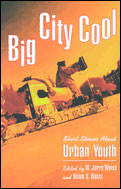 Big City Cool. Short Stories about Urban Youth, eds. M. Jerry White and Helen S. White, New York, 2002.
Big City Cool. Short Stories about Urban Youth, eds. M. Jerry White and Helen S. White, New York, 2002.
This anthology compiled for the young adult reader addresses issues such as race, crime, violence as well as the promise of the city. Its structuring principle is the city itself. Each author narrates a story set in a specific city which captures “its own beat, its own special spirit in which a young person can soar or sink” (White/White, vii). Walter Dean Myers in “Block Party–145th Street Style” tells the story of Peaches, a black teenager, who has to come to terms with her widowed mother getting remarried. The point of view of her best friend gives the narration an immediacy that a young reader can easily relate to. It also provides us with a glimpse into a functioning Harlem neighborhood where community life incorporates the fortunate and the not so fortunate such as the evicted family of juvenile delinquent J.T.
“Alone and All Together” by Joseph Geha takes us to Chicago where the first person narrator, an Arab American teenage girl, experiences the shock of September 11 which makes her reflect on her “American-ness” put into question by the tragedy. Her sister Sally at the same time shares her feelings on the telephone from New York where she is visiting her divorced father. The story powerfully captures the fear of an immigrant family of persecution and alienation: “Don’t let it be us, the words just pop into my head like a prayer. Let it be those white supremacists again, like from Idaho or wherever. And not us” (Geha in White/White, 52). It can be easily imagined that similar feelings go through the minds of many Arab Americans every time we hear reports of another failed attempt at bringing terror to the streets of an American city, such as the recent incident on Times Square on May 4, 2010.
“Rules of the Game” by Amy Tan takes us to China Town in San Francisco and into the life of a gifted young girl whose passion it is to become a master chess player. Supported especially by her mother, Waverly Place Jong learns the rules of the game and succeeds, but she struggles with the rules of the old Chinese customs represented by her family, their joint desire to rise above their circumstances, to belong, and the American rules represented by the city. Unlike Mona in Gish Jen’s story, Waverly rebels by claiming a superior status due to her chess skills and risks a rift between her traditional mother and herself.
These struggles of leaving the old, familiar community behind and the desire to rise to middle class in a new neighborhood are also played out in the story “‘White’ Real Estate” by Sharon Dennis Wyeth. While accompanying her mother on house hunting trips in Washington D.C., the narrator learns the difference between black and white real estate, the long struggle to overcome racial barriers and the meaning of roots in the old black neighborhood. Though she admires her mother’s energy and endless efforts to bring up her four children alone in a middle class neighborhood, she understands that community cannot be bought with a new house in a wealthier neighborhood and that the strive for social mobility might come at the expense of family time and social warmth.
Big City Cool has a lot more to offer to young readers than is outlined here. City life in its various ethnic neighborhoods is a vast topic, and in the end will always remain a mosaic of American culture. Each of these stories is easily combined with other materials. The power of literature, its richness and ever evolving literary landscape can be complemented, e.g. by a discussion of the book or the film “Freedom Writers” which was shown and discussed at the American Studies conference on which this edition of the American Studies Journal is based.
2 Teaching a Multi-Media Project: “Freedom Writers”
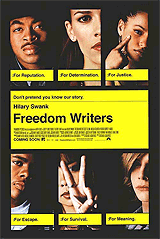 Though a Hollywood version of a real life story and to some yet another film depicting a bright-eyed, idealistic teacher “saving” her underserved and underprivileged students, the film “Freedom Writers” serves as a perfect entry into the topic of teaching the city and youth culture. It offers a glimpse at inner city youth culture in the early 21st century, dramatizes racial and class issues played out in gang culture among young people, and depicts how they can be channeled if not overcome through the power of literature and creative writing. “Freedom Writers” has been recommended in Germany by Stiftung Lesen, as mentioned on the German Web site with background information on the film, pictures and references http://www.freedom-writers.de/freedomwriters.phtml.
Though a Hollywood version of a real life story and to some yet another film depicting a bright-eyed, idealistic teacher “saving” her underserved and underprivileged students, the film “Freedom Writers” serves as a perfect entry into the topic of teaching the city and youth culture. It offers a glimpse at inner city youth culture in the early 21st century, dramatizes racial and class issues played out in gang culture among young people, and depicts how they can be channeled if not overcome through the power of literature and creative writing. “Freedom Writers” has been recommended in Germany by Stiftung Lesen, as mentioned on the German Web site with background information on the film, pictures and references http://www.freedom-writers.de/freedomwriters.phtml.
Teaching “Freedom Writers” combines fictional and non-fictional materials, various media such as literature, film, internet-based resources, music, and includes communication tools within the topic of growing up in a multi-ethnic, urban society. The film effectively illustrates how diverse a city classroom can be in the U.S., serves as another example for David James’ contribution to this e-journal, and references the Civil Rights Movement as an inspiration to students and teachers, a topic frequently taught in the EFL classroom.
As an idealistic twenty-three-year-old English teacher at Wilson High School in Long Beach, California, Erin Gruwell confronted a room of “unteachable, at-risk” students. One day she intercepted a note with an ugly racial caricature, and angrily declared that this was precisely the sort of thing that led to the Holocaust–only to be met by uncomprehending looks. So she and her students, using the treasured books Anne Frank: The Diary of a Young Girl and Zlata’s Diary: A Child’s Life in Sarajevo as their guides, undertook a life-changing, eye-opening, spirit-raising odyssey against intolerance and misunderstanding. They learned to see the parallels in these books to their own lives, recording their thoughts and feelings in diaries and dubbing themselves the “Freedom Writers” in homage to the civil rights activists “The Freedom Riders”.
(http://books.google.com)
The movie trailer told from the point of view of a Latina class member can be found on YouTube http://www.youtube.com/watch?v=MT0L1U-Rdj4.
Discussed as an introduction before the film viewing, this might be a useful exercise, both from the point of view of a narration, of a film synopsis, and the musical interpretation of the movie. The theme song of “Freedom Writers” is available on the movie soundtrack DVD as well as on the Internet. The lyrics are comprised of live quotes of Martin Luther King’s speech “I Have a Dream” in dialogue with performers Common Feat and Will.I.Am.
http://www.stlyrics.com/lyrics/freedomwriters/dream.htm
(That One Day ) Were gonna work it out out out
(That One Day ) Were gonna work it out out out
(That One Day ) Were gonna work it out
(I Have a Dream) I got a Dream
(That One Day ) Were gonna work it out out out
(That One Day ) Were gonna work it out out out
(That One Day ) Were gonna work it out
(I Have a Dream) I got a Dream
(That One Day) That one day
(That One Day) I’ma look deep within myself
(I Have a Dream) I gotta find a way…
My Dream Is To Be Free
My Dream Is To Be
My Dream Is To Be
My Dream Is To Be Free[Verse 1] In search of brighter days, I ride through the maze of the madness,
Struggle is my address, where pain and crack lives,
Gunshots comin’ from sounds of Blackness,
Given this game with no time to practice,
Born on the Black list, told I’m below average,
A life with no cabbage,
That’s no money if you from where I’m from,
Funny, I just want some of your sun
Dark clouds seem to follow me,
Alcohol that my pops swallowed bottled me,
No apology, I walk with a boulder on my shoulder,
It’s a Cold War – I’m a colder soldier,
Hold the same fight that made Martin Luther the King,
I ain’t usin’ it for the right thing,
In between Lean and the fiens, hustle and the schemes,
I put together pieces of a Dream
I still have one[Chorus][Verse 2] The world’s seen me lookin’ in the mirror,
Images of me, gettin’ much clearer,
Dear Self, I wrote a letter just to better my soul,
If I don’t express it then forever I’ll hold, inside
I’m from a side where we out of control,
Rap music in the ‘hood played a fatherly role,
My story’s like yours, yo it gotta be told,
Tryna make it from a gangsta to a godlier role,
Read scrolls and stow slaves,
And Jewish people in cold cage,
Hate has no color or age, flip the page,
Now my rage became freedom,
Writin’ dreams in the dark, they far but I can see ‘em,
I believe in Heaven more than Hell,
Blessings more than jail,
In the ghetto let love prevail,
With a story to tell, my eyes see the glory and well,
The world waitin’ for me to yell “I Have a Dream”[Chorus]
Student tasks can move beyond the fictional through accessing the Freedom Writers Foundation Web site http://www.freedomwritersfoundation.org, a nonprofit organization founded in 1997, whose mission it is to “positively impact [. . .] communities by decreasing high school drop out rates through the replication and enhancement of the Freedom Writers Method.” Through this exercise students verify the story of Erin Gruwell, the teacher, and the “Freedom Writers,” her high school students. They can even engage in a video chat with one of the original “Freedom Writers.” In addition, reading The Freedom Writers Diarywritten by Erin Gruwell and 150 of her students from an inner city high school in Way Beach, California, complements the teaching exercise.
3 A German Case Study
The impact literature has on the young reader is apparent, for example, in a project run by a German judge who works with juvenile delinquents. Instead of ordering community service, Fulda-based Judge Christoph Mangelsdorf asks the teenagers to read a book, answer questions about it and write an essay, thus taking his calling to punish as well as educate literally. The teenagers read a book voluntarily which is related to their offense and learn that they are not alone, that others go through similar situations in life such as a broken family, and, most of all, they experience the point of view of the victim of a crime as well. Süddeutsche Zeitung recently reported on this and a similar program which has been run in Dresden very successfully since 2008. A full interview with Judge Mangelsdorf, who works closely with social workers and the “Jugendhilfe Fulda,” is available on Deutschlandradio Web site. Unfortunately, the list of titles used in Fulda (14) and Dresden (more than 80) is not available online.
4 Additional WebSites
The following resources are taken from the electronic reader specifically compiled for the American Studies conference on “Urban Cultures, Urban Landscapes: Growing Up in the American City” compiled by Cornelia Voss and Martina Kohl. The complete reader can be found at http://usa.usembassy.de/classroom/urban_cultures.htm.
4.1 Hip-Hop Resources |
|
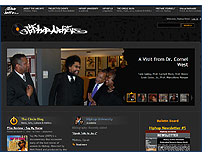 |
Hiphop Archive: The Hip-Hop Portal
The Hiphop Archive organizes and develops collections, initiates and participates in research activities, sponsors events and acquires material culture associated with Hip-Hop in the U.S. and throughout the world. The Web site provides information about all activities and projects and serves as a resource for those interested in knowing, developing, building, maintaining and representing Hip-Hop. http://www.hiphoparchive.org |
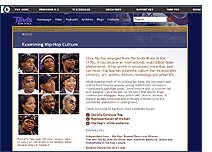 |
About Hip-Hop
The Public Broadcasting Service (PBS) presents a complex Hip-Hop Web site. Included are an overview, a timeline and a glossary. The opinions of Hip-Hop artists about topics like Socially Conscious Rap, Representation of Women, Hip-Hop’s white audience are included in print, audio and video format. |
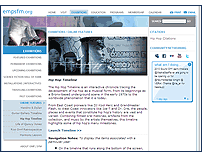 |
Hip-Hop Timeline
The Hip-Hop Timeline is an interactive chronicle tracing the development of Hip-Hop as a musical form, from its beginnings to the worldwide phenomenon today. The Web site was created and is maintained by the Experience Music Project (EMP) and the Science Fiction Museum and Hall of Fame (SFM) in Seattle. http://www.empsfm.org/exhibitions/index.asp?articleID=664 |
4.2 U.S. Lesson Plans |
|
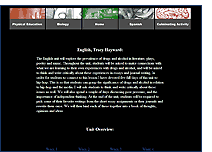 |
Poetry and Hip-Hop; Anti-Drug Messages in Hip-Hop; Peer Pressure; Censorship and Hip-Hop
compiled by Tracy Hayward.This English unit explores the prevalence of drugs and alcohol in literature, plays, poetry and music. In order for students to connect to this lesson it is related to Hip-Hop. This way, students can grasp the significance of drugs and alcohol in relation to Hip-Hop and the media. http://www.concept.org/drugs/eng.html |
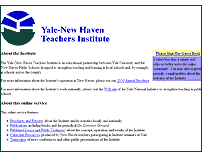 |
American History Through Literature: Adolescent Identity in the 20th Century
by Karen Wolff, Yale-New Haven Teacher Institute, 1981.The author discusses literature as a resource for understanding historical change and its impact on people’s live. In her lesson plan she offers stories about live experiences. A teacher’s bibliography and a student’s bibliography are attached. http://www.yale.edu/ynhti/curriculum/units/1981/1/81.01.09.x.html |
 |
The City in Black and White and Color: An Interdisciplinary Approach to Teaching Life in the City Using Literature, Social Studies, Art, and Photography
by Robert Johnson Moore, Yale-New Haven Teacher Institute, 1981.The city creates images in the mind of people which are reflected in art, music, literature and photography. In this lesson plan the students design a collage of contemporary urban life by integrating their personal impressions. http://www.yale.edu/ynhti/curriculum/units/1981/1/81.01.07.x.html |
 |
A Method of Teaching “Turned Off” Inner City Youths to Produce Urban Literature
by Belinda Carberry, Yale-New Haven Teacher Institute, 1981.Belinda Carberry wanted to connect the students with their city. Many students know little about their community and its history. Carberry asked the students to express their feelings by writing about their city. This is a collection of five lesson plans with an introduction, an annotated teacher bibliography and a student bibliography. http://www.yale.edu/ynhti/curriculum/units/1981/1/81.01.03.x.html |
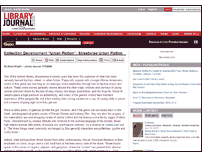 |
Collection Development ‘Urban Fiction”: Streetwise Urban Fiction
by David Wright, Library Journal, July 15, 2006.There is a new trend in Afro-American literature called street lit. Under this headline Hip-Hop, street and urban literature are combined. Street lit readers consider this genre authentic because many writers have firsthand experience in the life they describe. This genre is very popular among the young but also discussed controversially. A list of street lit is included. http://www.libraryjournal.com/article/CA6349018.html |
4.3 Surveys, Statistics, and Demographics |
|
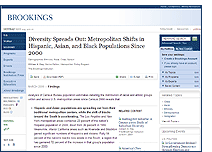 |
Diversity Spreads Out: Metropolitan Shifts in Hispanic, Asian, and Black Populations Since 2000
by William Frey, Brookings Institution, March 2006.The survey shows that Hispanic, Asian, and black populations expand to new destinations like suburbs, growing job centers in the South and West, affordable areas adjacent to higher-priced coastal metro areas. http://www.brookings.edu/reports/2006/03demographics_frey.aspx |
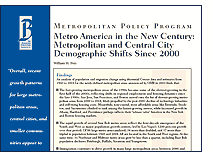 |
Metro America in the New Century: Metropolitan and Central City Demographic Shifts Since 2000
by William Frey, Brookings Institution, September 2005.This survey examines population growth and migration in the largest U.S. metropolitan areas and their central cities. It compares the large metropolitan growth in the 2000s with smaller metropolitan areas, the new micro-politan areas, and non-metropolitan territory. http://www.brookings.edu/metro/pubs/20050906_metroamerica.pdf |
|
|
|
Works Cited
Geha, Joseph. “Alone and All Together” In Big City Cool. Short Stories about Urban Youth, ed. Jerry M. White and Helen S. White, 51-53. New York: Persea Books, 2002.
Gillan, Maria Mazziotti, and Jennifer Gillan, eds. Growing up Ethnic in America. Contemporary Fiction about Learning to be American. New York: Penguin Books, 1999.
Erin Gruwell and The Freedom Writers Foundation. The Freedom Writers Diary. How a Teacher and 150 Teens used Writing to change Themselves and the World around Them. New York: Broadway Books, 1999.
—. The Freedom Writers Diary Teacher’s Guide. New York: Broadway Books, 2007.
Jen, Gish. “What Means Switch.” In Growing up Ethnic in America. Contemporary Fiction about Learning to be American, ed. Maria Mazziotti Gillan and Jennifer Gillan, 175–96. New York: Penguin Books, 1999.
Myers, Walter Dean. “Block Party–145th Street Style.” In Big City Cool. Short Stories about Urban Youth, ed. Jerry M. White and Helen S. White, 3–12. New York: Persea Books, 2002.
Tan, Amy. “Rules of the Game.” In Big City Cool. Short Stories about Urban Youth, ed. Jerry M. White and Helen S. White, 38–50. New York: Persea Books, 2002.
Timm, Uwe, interview with Christoph Mangelsdorf. “‘Lesen statt Arbeitsstunden’: Jugendrichter Christoph Mangelsdorf verhängt Lektüre statt Arbeitsstunden.” Deutschlandradio Kultur, 19 April 2010, http://www.dradio.de/dkultur/sendungen/thema/1166013/ (accessed May 15, 2010).
White, Jerry M. and Helen S. White, eds. Big City Cool. Short Stories about Urban Youth. New York: Persea Books, 2002.
Widmann, Marc. “Strafmaßnahmen für Jugendliche. Leviten lesen.” Süddeutsche Zeitung,15 April 2010, http://www.sueddeutsche.de/kultur/567/508709/text (accessed May 15, 2010).
Author
Martina Kohl studied at the Johannes-Gutenberg University in Mainz and Florida Southern College in Lakeland, Florida. She received an M.A. (1985) and a Dr. Phil. (1992) from Mainz University. Her research interest concentrated on 19th and 20th century American literature. From 1985 to 1990, Dr. Kohl taught in the English Department and for the English Composition Board and served as writing consultant at the Business School of the University of Michigan in Ann Arbor. Since 1993, Dr. Kohl has been working as Cultural Affairs Specialist for the U.S. Embassy in Bonn and Berlin where she coordinates a Germany-wide speaker as well as curriculum development program in American Studies. Dr. Kohl frequently teaches Cultural Diplomacy courses at Humboldt University Berlin. Her publications include “The Wilhelm Meister Pebble”: Bildungsromanelemente in Thomas Wolfes Look Homeward, Angel (1929), Of Time and the River (1935), The Web and the Rock (1939) und You Can’t Go Home Again (1940), Würzburg 1994, and Visual Culture in the American Studies Classroom: Proceedings of the U.S. Embassy Teacher Academy 2003, Vienna 2005, which she co-edited with Udo J. Hebel. Together with Prof. Dr. Hans-Jürgen Grabbe and Prof. Dr. Alfred Hornung, Dr. Kohl edits the American Studies Journal.
Suggested Citation

This work is licensed under a Creative Commons Attribution-ShareAlike 3.0 Unported License.


